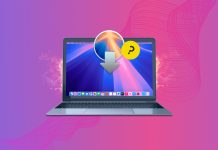I do not want this to turn into a debate, and yes I am fully aware that Macs are not immune to the same things as PCs, but here is why I love my Mac over Windows computers.
I have spent quite a bit of time over the past few days working on my brother’s computer to clean up spyware and junk that he has managed to obtain through some means. If I were on a Mac, it would be as simple as archiving the old system, re-installing, and installing the latest combo updater. This is not the case with anything running Windows.
Yes, I could go into a debate on why Windows has more viruses, and all of that, but I do not care about it that much.
The biggest problem is not that Macs do not have worms, trojans, bots, and the like; they do. However, it is not nearly as many as Windows-based devices.
The main reason I believe this is the case, is because within a Windows environment most users run as Administrators, thereby allowing full-blown access to the system to anything that they download and install.
With this type of unrestricted access programs have the ability to run, edit, add, modify, or anything else that the malicious software cares to do.
The worst part of the whole thing is that it takes quite a bit of time to sift through all of the registry entries, modified files, scan with three different anti-virus tools, anti-spyware tools, root kit finders and anything else I could find to attempt to remove the deep-hooked software.
With my Mac, I have never had any of these issues, not once. I have had my share of things not working, like Firefox, Adium, Safari, Mail.app, iTunes and countless other pieces of software. Nevertheless, most of that is fixable, since it is only software that is quite simple to delete.
If you were to get a virus on your Mac, you may never know it; but again you might notice it when your system starts to slow down. There are a few things that you can do to prevent yourself from installing any malicious software.
The first of these is to verify the download source of what you are downloading. If it comes from a reputable source, like CNet’s download.com, Apple.com, or any multitude of others, then there’s almost a 100% guarantee (I will not say there IS a 100% guarantee) that the file you have downloaded is safe. If it comes from ‘russian.hacker.com’ then I would avoid the file.
The second thing you can do is to verify that the Hash of a file, if provided, is the same as the one you have downloaded. If you are downloading a file from a possibly sketchy website, you can always verify that the file you have downloaded matches a hash, or digest, of the file from the author.
There are two typical hashing functions, SHA1 and MD5. Both are absolutely fine when using them to calculate the checksum of the file you downloaded. However, recent evidence has shown that they can be less than reliable with other uses, like encryption.
The process of calculating a checksum is quite simple. First, the author creates the file, typically a dmg file. Second, the author then runs a checksum against the file using SHA1 or MD5. Third, the author posts both the file and the checksum of the file to a website. You, as the downloader download the file from the website, and run the exact same checksum against the file. If the two checksums match, then there is a very good likelihood that the file you have downloaded is legit and has not been tampered with in any way.
The next thing you, as a user, can do is read the screen. Any applications that must be installed in system space, outside of ~/ or any of the subdirectories, typically requires the user to ‘Authenticate’ or verify that you are authorized to install applications. If you are installing a new application that does prompt you, verify that the name of the application matches what you are installing. Therefore, if you are installing ‘Adium’ and you see ‘JoeSchmoe’ then hit cancel and do not allow the application to install.
There are other tricks, but these are some of the easiest ones to start with to see if the file that you are installing is legitimate or if it is a rogue file. I am not saying that you do not need anti-virus, but there are plenty of people who do not run any antivirus, even on a Windows PC. Therefore, it all comes down to behavior and how much you scrutinize the software that you are installing. So be safe out there.






